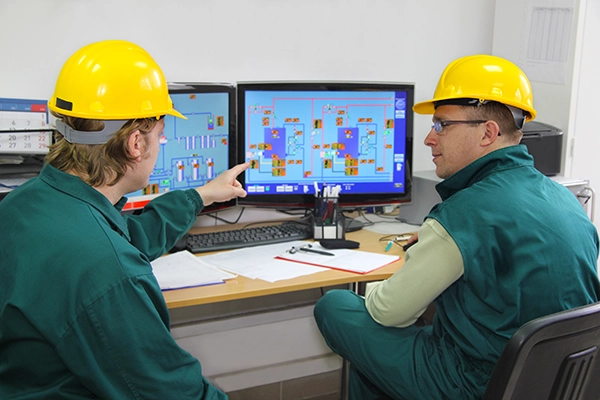In Today’s fast pace marketplace Manufacturer’s must consider using an APS System
Many manufacturing companies have an ERP solution and believe that their software requirements are completely covered by its functionality. Sadly, these manufacturers are mistaken, and they will soon find that their more-nimble competitors have overtaken them in the race for market share. These nimble competitors are able to optimize their complex shop floors in a way that allows them to respond to changes in customer demand or to conditions in the plant. Companies that rely solely on ERP can’t compete effectively. Their schedule is too slow, too static, too simplistic.
But ERP Includes Scheduling, Right?
Contrary to what your ERP vendor may have told you, you can’t use ERP to effectively schedule your shop floor. ERP, by its very nature, is a planning system, and it is very effective at planning both material and capacity over the long term. It’s not very good at telling you what to do this afternoon when the tooling is missing or the machine breaks down.
The Difference Between Planning and Scheduling
As APICS defines it, planning is “the process of setting goals for the organization and choosing various ways to use the organization’s resources to achieve those goals.” A schedule, on the other hand, is defined as “a timetable for planned occurrences.” Even “The New American Oxford Dictionary” concurs. A schedule is a sequenced list of activities, including dates and times. By definition, a plan is static; a schedule is dynamic.
ERP is For Planning; APS is for Scheduling
ERP means “Enterprise Resource Planning,” and it grew out of the need to reduce lead times through the timely ordering of materials without resorting to stocking too much. ERP’s core processes—the MRP run and the Capacity and Rough-Cut Capacity Planning programs are slow. Even the most modern ERP systems take a long time to complete these processes, and modern companies can’t afford to take a long time to do anything. In addition, they ignore the capacity constraints of the equipment and people on the factory floor.
Finite versus Infinite Planning
Another fundamental problem with trying to use an ERP solution for shop floor control is the assumption that capacity is infinite. In the real world, it’s not. There are constraints like a finite number of machine hours per shift and the availability of tooling or even operators with the required skills.
ERP is only material planning, not accurate job scheduling. ERP doesn’t consider constraints. At best, an ERP system will present a user interface screen(s) and rely on the scheduler’s “tribal” knowledge to try to produce a somewhat realistic schedule for the manufacturing floor. Many have resorted to using a spreadsheet which they maintain themselves to get a better picture of floor. But maintaining this sidebar application can be problematic.
How APS Differs From ERP
In contrast, an APS solution is designed to create efficient and effective schedules, quickly and accurately. APS operates in memory, so revising the schedule happens within seconds, even when optimizing for multiple constraints.
APS solutions are designed to function in the real world. They use finite capacity for schedules, operating within the constraints that reality imposes. They consider the availability of tooling, trained operators, appropriate skill sets, customer needs, revenue needs, downstream operation effects and the need for specific sequencing to minimize cleaning or setups between jobs. They use complex algorithms to optimize schedules, considering all the necessary and realistic variables. This is something a planner/scheduler can simply not humanly produce.
The reason manufacturers need an APS solution boils down to three factors: the complexity of scheduling in the real world; the need for optimization of multiple variables; and the need to be responsive to rapid changes. Addressing these 3 factors with an APS will allow your business to stay competitive and not lose out customers in the area of cost effective on time delivery.
